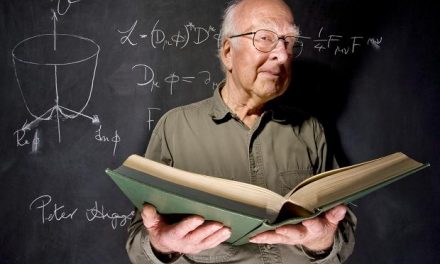VOLUME VIII – CHAPTER 5
KNOWLEDGE UPDATE

The Principal’s primary duty is to motivate the teachers to update their knowledge and share it with the pupils by providing enrichment learning.
During his inspection tours the author was fortunate to see some excellent Principals and teachers triggering the curiosity and intellectual appetite by sharing with them the latest research findings as mentioned in newspapers and magazines. Sri Krishnan, a Physics teacher and Principal had a habit of mentioning in the assembly a piece of the latest scientific research and ask the students to find out more about it. The author became his unpaid publicity agent and started telling about this in other schools. This enthused some Principals and teachers to adopt this approach.
When the author was himself a Principal, he used to take substitute periods when teachers went on leave and avail that opportunity to tell the students some new findings and ask the students to say something like this which they have found out. This motivated them to go after new information and be ready to share with the Principal when he came next time to their class. As the Principal (author) used to suddenly pick up some student to say something, everyone in the classes was ready everyday eagerly expecting the author’s visit.
Based on this practice, the pupils started asking other teachers also to do so. This indirectly compelled the teachers also to update their knowledge.
Another Principal of a CBSE school who took Chemistry classes regularly used to devote the last 10 minutes for this purpose -5 minutes for giving some new finding and 5 minutes for the students to share their new knowledge.
One Principal asked his teachers to help the students improve their mathematical skills by playing darts as a research study advised.
Another Principal asked the Biology students to find out why flowers have a beauty which only the bees can see. They went to the internet and found out that petal iridescence is at the ultraviolet end of the light spectrum visible only to bees.
One Principal asked the pupils to correlate the decline of corals with global warming-corals give warnings of the changes in the ocean system.
One Principal told the pupils that research has found out that sun-reflecting crops can reduce the temperature by 7 degrees.
Sri. C.A.S. Raghavan, Principal k.V.I, Kalpakkam told his Biology students that people living in the campus get eyesore during a particular time every year and asked them to find out the reason. After some months the students reported that whenever the casuarina trees started flowering people developed this eyesore.
Can you ignite the spark in your pupils? For that you have to ignite yourself first!
~~~~~
VOLUME VIII – CHAPTER 6
WHITE SPACE

A teacher’s child may be studying in another class. On some day there may arise an occasion when some misunderstanding crops up between the two teachers. That teacher unable to hit back may take it out on this child who gets caught in the cross fire. A word develops into a dialogue, a conversation, a discussion, a debate, an acrimony, an antagonism, tension-conflict. Sparks fly. Emotional upheaval and estrangement. Finally, not on speaking terms within the same staff room!
Was this necessary?
This “taking on” happens in examination, in co-curricular activities, in sports etc. When there is such an emotional build up, then their focus gets disturbed, concentration gets reduced, preparation for teaching becomes indifferent, laxity in teaching standard and unnecessary rupture in human relations.
In the games class there is a conflict between two students. ‘A’ gets the first rank with a difference of one mark. The teacher praised another whom ‘A’ doesn’t like. The teacher scolded ‘A’. All such things create tension in the minds of the students.
The school is a place where we expect creativity to happen, minds to bloom, and a life full of zest and activity. All this is knowledge work. Knowledge workers need some time and space to think calmly and ponder quietly over an idea.
Any form of tension will affect their poise. So, to counter this, some institutions have different systems in place. In the International School at Aurobindo Ashram, Pondicherry, there are two rooms called release- room and repose-room. When a student or a teacher feels emotionally upset, he, on his own, goes to the first room and showers a series of blows on the punching bag hanging there in the Centre. As he lets out his steam, slowly the force and speed of his blows come down till finally he has spent out his anger. Then he moves on to the ‘repose room’ where there is subdued lighting and he sits in meditation till his mind becomes totally peaceful. These rooms are called “white space” or “creativity room”.
There may be several reasons for staff and students not being able to give their full attention–interruption from others, chatter boxes around, many competitions outside, duties other than class work, phone calls, meetings for staff.
Multi-tasking results in not even one task getting full attention. Though modern day work place requires multi-tasking, hopping from one to another rubs your mind off the much needed time to think, evaluate and respond.
In earlier days when steam engines were on duty, a study found that if an engine stops at a station and then starts, it takes 7 minutes to gather full momentum. Another study found that it takes a person 25 minutes to return to the earlier task, after his attention gets diverted. This leads to disturbance, dissipation of attention, time pressure, stringent deadlines, and increased stress with high BP, finally the institution’s work culture suffers.
If you want your staff to be creative, they need time for themselves to muse and fonder in quietude. Some companies allot one day as “thinking day” when at a specified time, staff retire in silence to think -meditating or learning new ideas. Today’s life is too hectic and doesn’t allow time to relax. It is imperative that you should provide enough time and space to quieten the mind.
In the Perks School at Uppilipalayan on the way to Singanallur from Coimbatore, the Founder Director late Sri. Rama Ranganathan has done two wonderful things. He has constructed an18’ pyramid inside which anyone can go, sit and meditate. Another is the “Agnihothram”. A haven done by the hostel students to visit twice a day, morning at sunrise and evening at sunset-time. This purifies not only the atmosphere but also their minds.
In Sri Ramakrishna Mission Vidyalaya, Coimbatore, there is a huge prayer hall where a big portrait of Sri Ramakrishna Paramahamsa is placed. After the Puja the doors of the shrine are closed, but the hall remains open. During any part of the day anyone with a difficult mind or overpowered by emotions can sit there and meditate till reason gets the upper hand over emotion. The punching bag is your mind and the hitting hand is your reason.
In the hostel of Vivekananda College, Chennai, if anyone of the hostelites is upset he will go to the shrine in the hostel and pour out his heart to Sri Guru Maharaj in silence.
What is prayer except ‘talking to god’. You talk to your conscience which will show you the correct path.
White space doesn’t mean physical space only, it means you create some mental space (includes time also), where and when and through which you relax, rejuvenate, recharge yourself for more and better work. Cicero, the great Roman orator asked, “what is leisure but change of work?” leisure does not mean being idle, lazy, without doing anything worthwhile. The word, “bore” is anathema to the author as he had never felt bored. The author wishes to quote some examples from his own experiences he had or read or heard. As to how different people had created this “white space” for themselves in their own way.
In December 1961 the author visited the Ramakrishna Math at Los Angeles, USA. There he was introduced to Brahmachari Chaitanya who had joined the math. He was a PhD in Nuclear Physics from Stanford University, when the author asked him as to why he joined this order, he replied,
“I felt unsafe outside
So I came inside here
I am trying to go inside me
And look at the outside
From the inside”
That was his white space.!
In 1974, the author on an inspection tour visited the Tibetan School at Dodabellapur, Karnataka. Along with Dr.S.M.S. Chari, Joint Secretary, Ministry of HRD, and holding additional charge of the post of Chairman, Central Board of Secondary Education. They were all refugees who have been torn away from their motherland, Tibet and had sought asylum in India. They came with nothing. They were trying to rebuild their lives with their own effort, own toil, sweat and they had created a beautiful community living concept. They had a temple for Buddha-quite a calm and serene prayer hall-when he visited that hall twice – in the early morning and at night, he found many young and old sitting in silence and praying.
That was the ‘white space’ for their battered lives.
In 1972, the author went to Puri to act as the Centre Superintendent for the CBSE Board exam, he faced a lot of turbulence as the students demanded their “right” to copy in the examination, which he refused. He had to see death face to face at the hands of the students who had glistening daggers hidden at the back of their shirts. On the evening of the third day when he went to the Puri Jagannath Temple, he saw one of the exam going students sitting in a corner of the “Prakara” with eyes closed. He went near him and asked him why he was sitting there. That boy said, “I am trying to cleanse my soul for having been a part of the gang that created trouble for you in the last 2 days. I am telling the lord how much ashamed I am”.
That was his white space!
In December 1989, the author visited Gaya and stayed with Mrs. Rama Srinivasan, Principal, KV, Gaya and Mr.Srinivasan, Former General Manager, Northern Railway. They took him to Bodh Gaya temple. At that time Bihar had experienced ravaging floods and a great loss of life and property. We saw two students of KV sitting there. When they got up seeing their principal, the author asked them the reason for coming there. They said “we are unable to see the suffering of the people. We have come here to seek the lord’s blessings for their speedy recovery” that was the ‘white space’ of innocent minds-but feeling hearts!
In 1990 January, when the author went to inspect KV Madurai, he asked the Principal about a student Amudha who got the President’s Award for Guides. She was a brilliant student and was expected to join engineering or medical course. But the Principal said that she had joined B.Sc agriculture course. The author was curious and told the principal to ask her to meet him the next day. When she came she said that she took B.Sc(Agri) because later on when she became a District Collector this knowledge would help her to serve the poor villagers in the rural areas. She had planned her future very clearly. Later on she became an IAS officer and got the prize for the best District Collector.
That was the white space she had created for herself in advance!
In 1973, while attending the KV Principals’ conference at Dehradun the author visited a place called “Sahasradhara” a place where water oozes out of myriad holes on the mountain side. There was a rectangular space printed in white. The author was told that Pt.Nehru as Prime Minister, when he felt heavy with work, used to come here, sitting in an easy chair at that place , viewing the beautiful Himalayan scenery and enjoying the “sound of silence’. The absolute calmness, the gentle breeze, the murmur of the water flowing down slowly, the music of the birds, the aroma of the flowers, the gentle rustling of the leaves–all these created a new person in him.
That was his white space!
Brahmakumaris and the Swamijis of Sri Ramakrishna Math – all these have one common ‘white space’ – wherever and whenever there is a natural calamity, they rush to the succour or the victims. Similarly, the nuns of the Missionaries of Charity (of Mother Teresa) take maternal care of orphaned children, elderly and terminal patients.
To all these 3 groups, service to the needy is their “white space”.
Some years back the author met a District Collector when he went to visit the Panchayat Samitis (Unions) in that district. During the conversation the Collector told him that whenever the work pressure became heavy he used to visit Vadalur Sri Ramalinga Swamigal Samadhi and spend some time quietly in the prayer hall there and he used to get solutions for his problems in that state of calmness.
That was his “white space”.
When the author visited the Lakewood County Schools in Denver, Colarado, U.S.A., the Principal of a school told him that whenever his spirit was down or faced any problem from the students or parents he used to quietly slip off to the interior of Rocky Mountains and spend some time there. He said that the “stillness” present there ‘stilled his mind’ and gave him a fresh energy to face life at school.
That was his ‘white space’.
When the author visited a school in Geneva, Switzerland, that Principal said,” at the week end I would take a long trip on the ropeway connecting two mountains and that trip will recharge me for the next week. Sitting high in the air enjoying nature’s beauty was a tonic for him.
That was his ‘white space’.
When the author visited the Alazhar University at Cairo, Egypt, in August 1961, a Professor there told him that whenever the Arab–Israeli conflict weighed too much in his mind, he would visit the son-et-Lumiere show (sound and light show) of the Pyramids, because it would give him hope of the continuity of mankind despite all conflicts over the centuries. That was his ‘white space’.
The American president has this ‘white space’ during his vacation at Camp David or in his ranch. That is his ‘white space’.
When the author visited a KV at Vishakapatnam, he paid a courtesy call on the vice–admiral who was the chairman of the school committee. During the tea, the admiral made an interesting revelation that one of his deputies had an interesting habit of going down to spend some time inside a submarine docked in the yard, whenever he wanted to be all by himself, to have his personal time.
That gave him the ‘white space’ to think about the solution for problems.
While serving in Sri Ramakrishna Mission Vidyalaya as Dy. Director (South Zone) Community Development Training, Govt of India, the author had the rare privilege of serving as an attendant for Sri Vinobha Bhave for 2 days. At that time he asked Vinobhaji how he would face a stiff opposition for his Bhoodan scheme from any rich landlord during his yatra. Vinobhaji said, “no problem, that night I used to read the tenth chapter of the Bhagavat Gita. I pray to the lord to enter that landlord’s heart and then go to sleep. Next morning invariably that landlord will come on his own and offer land. Gita has always helped me”.
Vinobhaji found his ‘white space’ in the Bhagwat Gita.
In 1962 the author had the opportunity to meet Dr. Arnold Toynbee , the famous British historian, at his country home. During the discussion, Dr Toyn bee told the author that when he wrote his Magnum Opus,“the Study of Civilizations” (8 volumes) covering several civilizations over 5000 years, he visited the Lake district made famous by Wordsworth in his poems, whenever he had a knot in his mind, while discussing the genesis, growth and decay of a civilization. The serenity of the Lake district unraveled the puzzle in his mind.
Toynbee found his white space in the peace of the Lake district. A month later when the author visited the lake district, he realised the meaning of Toynbee’s statement.
Mr. Winston Churchill, the Prime Minister of England, during world war ii, in the midst of his onorous duties of guiding the campaign, found solace now and then in his hobby of painting. He used to spend an hour at painting and then start his war planning. Painting was Churchill’s ‘white space’.
Whenever Akbar planned his war attacks, before that, for an hour, he used to hear Tansen’s music and then start issuing orders. Music was Akbar’s ‘white space’.
In 1965 the author was deputed by his Director and mentor, Sri. T.S. Avinashilingam to hand over a letter to Dr.C.P.Ramaswamy Iyer ,the great statesman, at his residence in Chennai. While having a cup of tea, Dr.C.P.R. told the author that as Dewan of Travancore or as the Member of the Viceroy’s Executive Council, he took to a study of Kalidasa and Valmiki Ramayana whenever his mind was agitated. Kalidasa and Valmiki provided the “white space” for him.
An industrialist, whom the author met at Puttaparthi at Sri Saibaba Ashram, told him that whenever he used to write Om Sri Sairam (12 pages) and go to sleep with the note book kept under his pillow, that night he would get in his dream a solution for his problem. Those 12 pages of Sri Sairam were his ‘white space’.
A teacher known to the author was assigned a class considered very troublesome in the previous year. On the reopening day, she simply asked them each to sing a song. Next day she asked them each to tell a story. Next day she asked each to do some mimicry of their friends or teachers or imitate their teachers’ mannerisms. Next day she asked each one to ask questions to those in the row behind them and then reverse it in their subjects. Next day she conducted an Anthakshari from film songs known to them. On the last day, Saturday, she asked each one to write the name of a student in the class whom he likes the most and the reason for it. On Sunday she collected all their replies and made a list of good qualities of each one, as found by their classmates.
On Monday she read out the list and put it on the class notice board. On Tuesday the class was remarkably calm and when she entered the class they gave her a standing ovation. When asked why they did so, one pupil replied, “Miss. All these days we did not know we were so good and that we had so many talents. Thank you for revealing us to ourselves”. Can you tell what was her ‘white space’?
In the Madras High Court, Justice Karpaga Vinayagam gave a unique judgment. In a case involving an M.L.A, he found him guilty and sentenced him to spend 3 months at the Gandhi Museum Library, Madurai and read books by and on Gandhiji. At the end of 3 months, the M.L.A said that his experience had made him a different person. The judge helped the M.L.A discover ‘his white space’ at the Madurai library.
Once a KV student was scolded by a teacher for not maintaining the record book well. Annoyed, that boy put sugar in the petrol tank of the teacher’s scooter. That evening it could not be started and had to be taken to a work shop for repairs. After a week, seeing the suffering of the teacher who had to take 2 buses daily to travel 30 kms., the boy felt repentant. But the boy did not have the guts to confess his guilt. So he went to the laboratory during lunch time and sat there looking at the teacher in silence. When he did like this for a few days, the teacher understood that he is doing so to convey something to him. He called the boy and said, “I think you have done something wrong and you are foregoing your lunch to atone for that. If it is related to me, I forgive you because you have realized and repented. Tell me what you have done so that I can help you”. When the boy told the whole story, the teacher laughed, patted him on the back and said, “now I realize I have made a mistake in scolding you without helping you by telling how to maintain the record book well. So to atone for my mistake in getting angry with you and wounding your feelings, I am going to skip my lunch and you have to eat it because you didn’t eat for the last 3 days”.Both of them found their white space in fasting and repenting.
When the author was Principal of KV AFS Avadi, he used to catch the 6.30 am. train at Ambattur and reach Avadi Depot station at 7.15am. During those 25 minutes’ travel he had seen a teacher silently reading the “ Kanda Shashti Kavacham,” “Vishnu Sahasranamam,” and “Hanuman Chalisa” daily. He found out that she had some problem at home with her mother-In-law and sister-in-law who scolded her daily for not bearing a child even though she was married 3 years earlier. She found her “white space” in that reading and indeed after some time, God answered her prayer.
Some of the top 25 most powerful women in the Indian industrial scene have found their “white space” as under:-
Amrita Patel, Chairman National Dairy Development Board – active involvement in two movements– ecological security and rural health care.
Kiran Mazumdar Shaw, Chairman & M.D.Biocon – spending time with family and friends
Leena Nair, Executive Director, Hindustan Unilever – -do-
Mallika Srinivasan, Director – TAFE – -do-
NeClam Dhawan, M.D. Hewlett Packard – -do-
Preetha Reddy, M.D. Apollo hospital – -do-
Renu Sood Karnad, Jt. M.D., HDFC – -do-
Renuka Ramanth, Former M.D.& CEO, ICICI Venture – -do-
Zia Mody, Senior Partner, AZD and partners – Traveling
Anish Motwave Executive V.P, Newyork Life Ins. – -do-
Deepa Misra Harris, V.P. Taj hotels – -do-
Meena Chaturvedi, E.D.Pension Fund Regulation & Development authority- -do-
Meira H.Sanyal, Country Head, ABM Amro – -do-
Smeeta Neogi, Head Marketing West Side – -do-
Pallavi Shroff, Partner, Amarchand Mangaldas – Gardening & Music
Punitha Arumugam, Group CEO Radison Media – Swimming & Gymming
Bharti Gupta Ramola, India Leader (Transactions) Price Water House – Reading
Zarina Mehta, C.E.O-Bindas – -do-
Swati Piramal, Director, Piramal Health Care – Sufi poetry medieval history & Sailing
Ninalal Kidwai – Reading management literature
Anisha Vora, Group Jt. M.D, Prabhudas Lilladher group – Walk on the Beach or in the Garden
Madhubai Puri Buch, E.D- ICICI Bank – Using Technology
Kalpana Morparia, C.E.O JP Morgan Stanley – Shopping & Movies
Rama Bijopurkar, Management Consultant – Watching TV & reading
Shika Sarma, Chairman Axis Bank – Movies
Sunitha Narain, Director, Centre for Science and Environment – Reading
Vinitha bal, M.D. Brittania Industries – Listening to classical Indian and western music
They have found their “white space”.
Like them, develop your own white space to get over your work pressure and maintain work, life balance. Then your work will become your hobby.
~~~~~
ONE WHO KNOWS (VOLUME VIII – CHAPTER 5 & 6)
(DIMENSIONS OF THE LIFE AND WORK OF A PRINCIPAL)

947) One who is “ Yesa Suptesu Jagart,”-“that person who is awake in those that sleep”
Awake in himself
Awake to people
Awake to happenings around
Awake to on coming change
948) One who knows that while individuals will grow older, institutions also will grow stronger.
949) One who has a tough mind with a sweet heart.
950) One who sympathizes with parents who have autistic kids and appraises them of their-
i) Communication signs such as,
A) They can hear, see and feel; yet have difficulty in understanding and expressing what their senses tell them.
B) No true words. The child babbles, repeats the same words. May not follow simple commands.
C) Does make eye contact or to his name or seem like he can’t hear you
ii) Social skill problems
A) Difficulty in regulating emotions laughing, crying, yelling.
B) Seems to be in his own world, does not participate in social games.
C) Does not seek to share interests.
iii) Playskill problems
A) Plays with toys.
B) Repetitive movements tiptoe walking; hand flapping, waving; rocking; spinning in circles.
C) Rigidity in play.
D) Gets annoyed if his routine is affected.
E) May not indulge in imaginary play.
F) Attracted only by parts or toys like wheels of a car and not the car.
iv) Sensory clues
A) Attracted by moving objects.
B) Is not affected by high pain or tem peratural.
C) Afraid of every day sounds like mixie ,grinder.
v) Their strengths
A) Extra-ordinary skill in a particular area-music, maths, art
B) Phenomenal memory
C) Visual thinking
Remember.
“if a child can’t learn the way we teach, maybe we should teach the way they learn” – Ignacio Estrada. Early intervention is essential and will be useful.
951) one who feels that true teaching is uniquantifiable except by feeling.
952) One who advises both his staff and students to shift from the attitude
“I must do it” to “I want to do it”
952) One who advises his students-
It is a positive to look up to others.
Don’t allow it to become a weakness thro’ submission.
Then you can become better than the other person.
953) One who exhorts his student “with a clarion call you are born to lead. Live up to your inheritance”.
954) One who combines the political skills of Lee Kuan Tew, (P.M. of Singapore) the emotional intelligence of Desmond Tutu (Nobel Peace Prize Winner) and the innovative instincts of Steve Jobs, the courtesy of Albert Einstein, the empathy of Indira Gandhi, the humour of Pt. Nehru, the will power of Sardar Patel, the erudition of Dr.S.Radhakrishnan, the H.R. Of George Washington and Lord Mountbatten, the strategy of Winston Churchill, the self-confidence of Mrs. Margaret Thatcher, the intelligence of Rajaji, the self-belief of Y B Chavan, the decision – making of John Kennedy and Kamaraj, the humility of Harold Macmillan, the oratory of Barrack Obama, the mass appeal of Narendra Modi, the quiet dignity of Queen Elizabeth ii, the memory of Charles Degaulle, the simplicity of Lal Bahadur Shastri, the lucidity of Dr.C.V. Raman, the patriotism of Bhagat Singh, the service mind of Florence Nightingale and Gandhiji’s faith in God’s name.
955) One, who knows that in Ramayana Vasishta was the spiritual teacher and Viswamitra the material teacher and so also in Mahabharata Krishna was the spiritual teacher and Drona the material teacher. Asks his/her staff to play both these roles in the moulding of the students.
956) One, who like Joeking, C.E.O of Avadi (India) adjusts himself to the society of the station to which he is posted.
957) One who knows the 7 steps to success:-
A) dream big
B) Don’t just stop at thinking. Take the plunge.
C) Never underestimate your abilities.
D) You are as good as any other person.
E) Stay different
F) Don’t comfort lull you from trying out something different which you believe in.
G) If you have an idea, act on it so that you don’t regret a missed opportunity.
958) One who understands Voltaire’s advice:-
“weakness on both sides is the motto of all quarrels”
959) One who has assimilated the truth in al pacino’s in the film “Queens Thirteen”
I don’t want labour pains
I just want the baby
i.e. No pain – no gain
960) One who is a leader like Dhoni, not because he has produced centum results (2 world cups, T20 ODI) continuously for a decade but he “is the same centre of a world that oscillates precariously between jingoistic trumpeting and reflexing shaming” to use the words of Nirmal Sekhar.
961) One who knows that he can choose his friends, but not his bosses and when it comes to dealing with the boss he can make assumptions only at his peril.
962) One who is number 1 both in customer satisfaction and in market leadership.
963) One who has “the ability to look a little into the future and makes sure his staff understand how he is seeing the world and why he is making the decision he is making” (Roger Ferguson C.E.O )
964) One who knows that “the true measure of his position lies in how he treats the lowest paid employee” (Scott Scherr C.E.O Ultimate Software)
965) One who knows he can initiate change by “ always working hard on something uncomfortably exciting” (Larry Page C.E.O, Google)
966) One who “has the vision to see what is invisible to others” (Jonathan Swift)
967) One who has the ability to execute his vision.
968) One who knows that “thoughts don’t need quieting as much as a sense of direction and focused application”
969) One who knows that power is the ability to make something happen and that management is all about power- how to acquire it, how to use it, how to distribute it and how to withdraw it and that no college of education teaches it.
970) One who knows that in the world of management he has to make the journey from the lone ranger Parasuram to the team leader Rama and to the enabler Krishna.
971) One who knows that for Krishna power comes from within not from an institution and to be able to realise this power is his createst challenge.
972) One who knows that he is not a master but at best the steward who communicates the will of the management and ensures that its word is respected and that he is also subject to the will of the management and can be punished by it if he creates a personality cult in building the institution.
973) One who knows that “ the more people open up to him, the more they will be interested in the conversation and interested in how he responds after listening to them”(Mark Goulston)
974) one who knows that “ he must train his staff to identify the elephant in the room and that very often the elephant is the fact that people are not just listening to, understanding or valuing each other”
975) One who knows that when he feels ‘felt’, he will feel ‘less alone’. – Mark Goulston
976) One who knows that when he is having a conversation, he must keep a mental note of the words the other person uses that have an emotional charge or hyperbole such as ‘always’ or ‘never’ or ‘awful’ or ‘amazing’.
977) One who knows to observe their use of hands to ‘express themselves’ because their words don’t communicate their thoughts adequately.
978) One who knows “ I – C – U” – Important, Critical, Urgent and asks the other person to come up with those “I – C – U” thoughts inside him.
979) One who can lift the “transaction” conversation “(talking, listening and responding) to the transformation conversation” level and thereby effects a positive change in the thought process of the other person.
980) One who has a practice of asking his staff in the monthly staff meetings what changes they visualise.
981) One who knows that “the greatest asset he has built over his working years is the wealth of relationships, the human connections, the ability to make a difference and empower change and that it is that which puts a spring in his step every morning” – Richard Rekky – C.E.O KPMG India
982) One who was a practice of meeting the freshers often, chats with them their careers and their ambition and the professional and personal help they need.
983) One who knows that his staff come to him because they believe they will get the right advice and that puts a huge responsibility on him.
984) One who constantly focuses on pegging higher benchmarks and builds a differentiator that is seen by all.
985) One who makes his institution emerge as a name that people are proud to be associated with and makes heads turn when his name is spoken of and the world respects his work, his ethics and his culture.
986) One who makes each staff to go beyond his / her potential. To find purpose and meaning in their lives and makes them come to work day after day.
987) One who allows staff to self- manage through groups as it increases their decision – making capacity with greater levels of responsibility.
988) One who knows the difference in the meaning of the same word like “jogadu” in Orissa means a resourceful person who can get things done whereas in East Delhi “jugaad” means surviving yet another day despite odds.
989) One who knows that it is hesitation and half – hearted execution that will kill and not the competition.
990) One who knows to think, to think big and act small, making many smart bite – sized bets.
991) One who doubts his own infallibility.
992) One who challenges himself all the time and knows that if a new step is not scary it means he is not pushing himself enough.
993) One who knows that learning opportunities come everyday from all persons he interacts with down to the peon.
994) One who finds happiness in his work and makes it a fulfilling experience for himself and the people who work with him.
~~~~~
THE ultimate step of Self-realisation depends upon the base of Self-confidence. You must therefore develop as a first step Confidence in your own self. Without having and developing Confidence in your own self, if all the time you are talking of some power being with someone else, if in this way you travel all the time and depend upon a power which is with someone else, when are YOU going to acquire any power and confidence in your own self? – Bhagawan Sri Sathya Sai Baba




